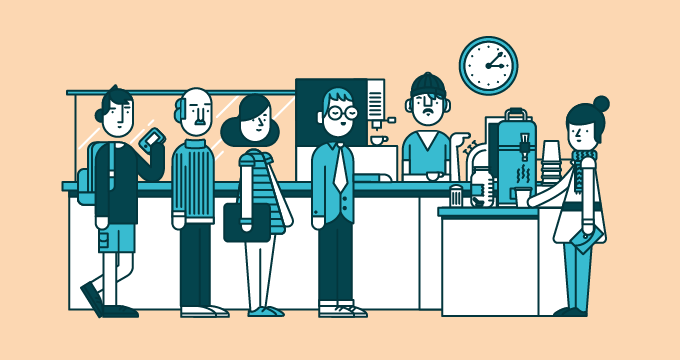The customer experience landscape has undergone radical changes over the last decade. This has partly been due to the increasingly prominent role Millennials are occupying in the marketplace. A generation that has grown up around technology and is accustomed to instant gratification has caused businesses to review what their customer satisfaction standards are.

Source: Pixabay.com
Satisfied customers are not only more likely to return but they’ll also be enthusiastic about recommending your product to their social circle. While technology has assumed a larger-than-life role in the modern enterprise, many companies are not leveraging the power of IT to exceed customer expectations.
The following are just some of the ways technology can drive customer satisfaction.
1. Reduced Call Hold Times
Telephones have been around for decades and are part and parcel of business communication. Sadly, many companies still use telephones in the same way that businesses did 40 years ago. There have been huge strides in phone technology that improve call interaction and reduce hold times.
That’s achieved through exhaustive menu options and quick routing of calls to the relevant department. When you configure call menu options, structure and prioritize them based on the most common problems your customers raise.

2. Self-Service
One of the advantages of having menu options is the capacity for self-service. The caller doesn’t need to wait to speak to the operator and explain their issue before they are referred to the right person.
Remember that when the customer calls, they want a problem solved in the fastest and most conclusive way possible. They’ll, therefore, be more than happy to solve the problem on their own if the self-service menu allows them to do so.
Not everything can be fully resolved via self-service but certain things such as service cancellation, statement request, and bill payment can be automated in a way that doesn’t require the intervention of a customer service representative.

3. Active Listening
Few things are more frustrating than sitting through a conversation where the other party seems to go on and on without giving you the opportunity to contribute to the discussion. It’s vital that your customers feel you are actively listening to them.
Active listening isn’t just providing outlets such as social media and contact forms where customers can share their concerns and vent their frustration. Not only should you have avenues for soliciting feedback, but you must also proactively engage customers by frequently asking for recommendations and suggestions.
You could craft an online survey or develop a platform where customers can readily submit insights on how you could make your products and services even better.
4. Multi-Channel Communication
There are numerous ways that customers can get in touch with businesses today. Traditional means such as snail mail, phone calls, and physical meetings are still available. They have, however, been joined by digital channels such as SMS, email, social media, live chat, and website contact forms.
In theory, the more channels you have, the better. It’s all about giving your customer the opportunity to reach you in the way that’s most convenient and effective for them. But multi-channel customer communication can lead to chaos if it isn’t supported by a comprehensive cloud contact center solution.
The contact center platform captures communication from different channels and stores them centrally. That way, nothing falls through the cracks.

5. Anticipate Problems Using Artificial Intelligence (AI)
You could employ all kinds of digital marketing and SEO services to draw customers to your business. Yet, despite these efforts, some of your customers will at some point be dissatisfied with the quality of service they receive. AI technology can help you track customer behavior and take action even before they formally file a complaint. Note that many dissatisfied customers will simply abandon your product and won’t bother raising the issue.
Through AI, you can, for example, automatically email customers when they leave a poor product review, low company rating, or discontinue their subscription to your service. Apologize for their experience and propose ways the problem can be rectified.
Whereas there’s a lot of talk about machines rendering billions of humans jobless in the future, we are still a long way off from customer service technology replacing human interaction. You can, however, use technology to improve customer experiences by bettering efficiency.
